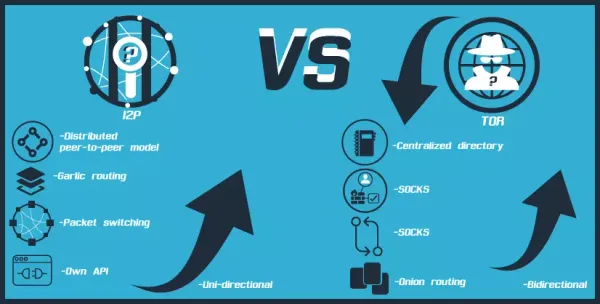Monero CLSAG Signatures: Linkable Ring Aggregation and Privacy Analysis
CLSAG signatures reduce Monero transaction sizes by 25% through efficient ring signature aggregation while maintaining identical anonymity guarantees and preventing double-spending via deterministic key images.

Monero CLSAG signatures revolutionize linkable ring signature creation through efficient aggregation that reduces transaction sizes by 25% while maintaining identical anonymity guarantees compared to MLSAG predecessors.CLSAG research paperdemonstrates how Concise Linkable Anonymous Groups eliminate redundant commitment verification through clever mathematical construction that preserves ring signature unlinkability and one-time spending prevention while dramatically improving verification performance across the entire Monero blockchain.
Mathematical Foundation and Ring Signature Construction
CLSAG builds upon discrete logarithm security assumptions where ring signature security depends on the mathematical impossibility of solving discrete logarithm problems in elliptic curve groups.Ring signature cryptographyprovides the mathematical foundation showing how ring signatures enable anonymous authentication within predefined groups, where signers prove group membership without revealing their specific identity among ring participants.
Ring construction utilizes Curve25519 elliptic curve math where each ring member contributes a public key point, creating a mathematical structure that enables signature generation by any ring member while maintaining mathematical indistinguishability between actual signers and decoy participants.Discrete logarithm assumptionsshows how discrete logarithm relationships between public keys and private keys create the mathematical basis for zero-knowledge proofs of ring membership.
Key image generation represents the critical innovation preventing double-spending in anonymous cryptocurrency systems, where CLSAG constructs unique key images through predictable creation from private spending keys and transaction outputs. This mathematical relationship ensures that spending the same output twice produces identical key images. This enables double-spend detection without compromising transaction unlinkability or revealing actual spending keys.
Signature verification methods process CLSAG proofs through efficient batch verification that validates ring membership, key image uniqueness, and commitment consistency simultaneously.Monero protocol documentationdocuments the encryption methods showing how verifiers check signature validity without learning which ring member generated the signature or gaining information about transaction amounts through commitment scheme integration.
CLSAG Improvements Over MLSAG Predecessors
MLSAG specificationdemonstrates how Multi-layered Linkable Anonymous Groups required separate verification for each transaction input, creating computational overhead that scaled linearly with transaction complexity. CLSAG eliminates this redundancy through unified signature construction that treats multiple inputs as a single cryptographic operation, reducing verification steps by approximately 60% while maintaining equivalent security properties.
Signature size optimization results from CLSAG's elimination of redundant ring proofs where MLSAG protocols generated separate ring signatures for spending proofs and amount commitments.CLSAG efficiency analysisquantifies the performance improvements demonstrating how single-ring construction reduces transaction bandwidth by 25% and verification time by 30% compared to dual-ring MLSAG approaches.
Aggregation mathematics show how CLSAG combines commitment verification with spending authentication through careful construction of challenge scalars that maintain ring signature security properties. The protocol aggregates multiple cryptographic proofs into a single verification equation, enabling efficient batch processing of ring membership, key image uniqueness, and commitment binding simultaneously without compromising anonymity guarantees.
Key image optimization eliminates multiple key image generation required in MLSAG systems where each input generated independent spending proofs. CLSAG constructs a single key image per transaction input while maintaining double-spending prevention through deterministic key image derivation that preserves the mathematical relationship between private keys and public commitments necessary for transaction validity.
Verification performance gains result from CLSAG's unified proof structure that enables parallel verification methods where multiple signature components can be validated simultaneously.Parallel verification techniquesdemonstrate how modern CPU architectures can process CLSAG verifications using SIMD instructions that accelerate elliptic curve operations across entire transaction batches.
Privacy-Preserving Properties and Security Analysis
Ring signature anonymity in CLSAG maintains mathematical indistinguishability properties where attackers cannot determine which ring member generated the signature even with unlimited computational resources, assuming discrete logarithm security assumptions.Cryptographic indistinguishabilityprovides the formal definition showing how encryption methods achieve privacy through mathematical methods that make different inputs produce computationally indistinguishable outputs.
Unlinkability guarantees ensure that observers cannot correlate multiple CLSAG signatures to the same signer without access to private spending keys, preserving transaction privacy across the entire blockchain history. The mathematical foundation relies on random oracle assumptions where signature generation incorporates sufficient entropy to prevent pattern analysis that could reveal spending relationships between seemingly unrelated transactions.
Unforgeability properties prevent attackers from generating valid CLSAG signatures without knowledge of corresponding private keys, ensuring that only legitimate key holders can authorize transactions spending their outputs.Digital signature securitydemonstrates how cryptographic signatures provide mathematical proof of authorization without revealing the secret keys used for signature generation.
Linkability within CLSAG enables double-spending detection through unique key image generation where identical spending attempts produce identical key images, allowing network participants to identify and reject duplicate spending without compromising signer anonymity. This critical balance between privacy and security prevents double-spending attacks while maintaining the unlinkability necessary for fungible digital currency.
Commitment hiding preserves transaction amount privacy through Pedersen commitments that cryptographically bind to transaction values while revealing no information about actual amounts being transferred.Confidential transactionsexplains how commitment schemes enable transaction validation without revealing transaction amounts, preserving financial privacy while ensuring mathematical correctness of balance equations.
Resistance to quantum computing attacks represents a significant consideration for CLSAG's long-term security where current elliptic curve discrete logarithm assumptions may become vulnerable to future quantum algorithms.Post-quantum cryptographyresearch explores alternative mathematical foundations that could provide ring signature functionality resistant to quantum computer attacks, ensuring Monero's privacy guarantees remain intact in a post-quantum computing environment.
Implementation and Network Deployment Considerations
Monero's CLSAG deployment occurred through hard fork activation at block height 2,210,000 in October 2020, replacing all MLSAG signature generation with the more efficient CLSAG protocol while maintaining backward compatibility for verification of historical MLSAG transactions.Monero hard fork historydocuments the network upgrade process demonstrating how consensus rule changes enable cryptographic improvements without disrupting existing network participants.
Performance benchmarking shows measurable improvements in transaction processing where CLSAG transactions verify approximately 30% faster than equivalent MLSAG transactions, significantly improving node synchronization speed and reducing computational requirements for wallet software. These efficiency gains become particularly significant during periods of high network activity where faster signature verification directly translates to improved user experience and reduced resource consumption.
Bandwidth optimization reduces blockchain storage requirements where smaller CLSAG signatures contribute to overall blockchain size reduction, improving network propagation speed and reducing synchronization time for new nodes joining the network. The cumulative effect of 25% signature size reduction translates to substantial storage savings across millions of transactions processed since CLSAG activation.
Compatibility considerations ensure that CLSAG signatures integrate seamlessly with existing Monero infrastructure including wallet software, mining pools, and exchange integration systems.Monero RPC documentationprovides the technical specifications showing how applications can process CLSAG transactions using standard cryptographic libraries and existing API endpoints.
Mobile wallet optimization benefits significantly from CLSAG's reduced computational requirements where smartphone applications can verify transactions faster and consume less battery power during synchronization. These improvements enable better user experience on resource-constrained devices while maintaining the full security and privacy guarantees of the Monero protocol.
Decoy selection algorithms remain unchanged in CLSAG implementation, continuing to use statistical distribution matching that selects ring members according to recent output age patterns, ensuring that ring composition provides optimal anonymity protection against temporal analysis attacks.Ring member selectionexplains the statistical algorithms that ensure ring members appear indistinguishable from the perspective of external observers attempting to identify real spends among decoy outputs.
Future protocol developments may further enhance CLSAG efficiency through advanced aggregation techniques, multi-signature support, and integration with layer-2 scaling solutions that preserve privacy while enabling higher transaction throughput.Monero research roadmapoutlines ongoing cryptographic research that could lead to further improvements in signature efficiency, privacy protection, and network scalability while maintaining Monero's core principles of decentralized, private, and fungible digital currency.




